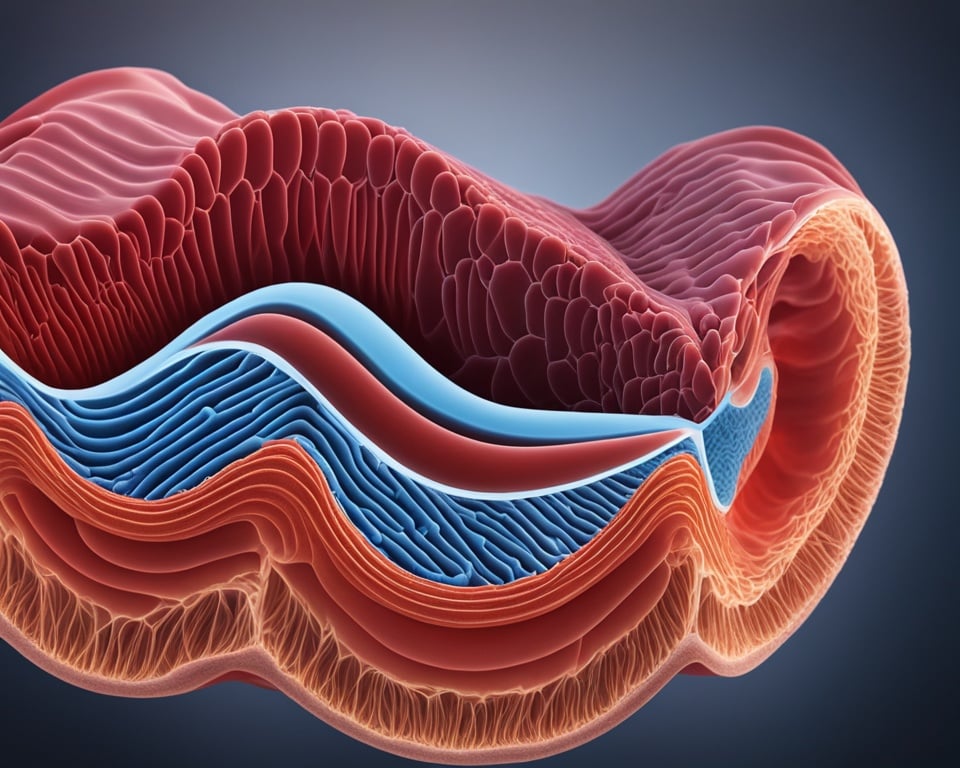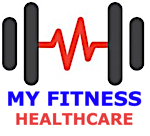In 1992, a ground-breaking study showed that creatine supplementation increases creatine levels in muscles. Today, I’ll help you understand how to use creatine for quick muscle growth, using years of research. Creatine is more than a supplement; it’s a key ally for achieving your best physical shape.
Correctly cycling creatine means optimizing your body’s natural processes for better muscle growth and performance. I’m here to explain how to supplement with creatine effectively. This includes advice from the International Society of Sports Nutrition and tips on how your diet, with carbs and proteins, can boost creatine’s effects.
As your guide in building muscle, my goal is to help you navigate through vast information. Together, from working out to choosing the right foods, we’ll explore creatine’s potentials based on the latest science.
Key Takeaways
- Understanding creatine supplementation is key to optimizing muscle growth and recovery.
- Diet plays a critical role in enhancing creatine retention and its muscle-building effects.
- Strategic cycling of creatine—loading, maintenance, rest—can lead to significant improvements in strength and body composition.
- Knowledge of scientific studies and recommendations from reputable organizations can guide informed supplementation practices.
- Pairing creatine with specific nutrients like carbohydrates and proteins is beneficial for maximizing its retention and efficacy.
Unveiling Creatine: A Catalyst for Muscle Magnification
As a guide in muscle-building, I often talk about the creatine benefits for muscle growth. It’s found that 95% of creatine is stored in our muscles. This helps provide quick energy during intense exercises. By turning into phosphocreatine, it helps our muscles recover faster after workouts. Thus, optimizing creatine intake is crucial for best results.
Creatine is great because it helps muscles hold more water, aiding in protein synthesis. It doesn’t only boost strength but also improves mental functions like mood and memory. That’s why following a creatine dosage protocol is important. It balances the benefits for both body and mind. I always encourage using creatine wisely to support mental and physical health.
To fully benefit from creatine, sticking to the recommended dose is key. This results in more energetic workouts and, over time, bigger muscles. It matters not if you’re new to fitness or an experienced athlete. Understanding creatine’s role in your routine is crucial. With my advice, you’ll enhance your muscles and performance by smartly using creatine.
The Art and Science of the Creatine Loading Phase
To get the most out of creatine, you need to know some science and a bit of art. Let me show you how to make the most of this phase. You’ll see quick muscle growth and efficient muscle saturation.
Strategies to Reach Peak Muscle Saturation Quickly
We want to quickly fill your muscles with creatine during this phase. This means using a plan that makes your body soak up divided doses well. Studies show big gains in performance when creatine is used right.
For instance, men saw their anaerobic running capacity jump by 23% after using creatine. This shows how much creatine can boost your physical skills. It’s great if you’re trying to get ahead in sports.
Understanding the Duration and Dosage Protocol
Usually, I suggest a 5-7 day creatine loading period. In this time, taking 20-30 grams of creatine every day helps saturate your muscles. This leads to quick muscle growth. But too much can harm more than help, like causing stomach issues.

| Parameter | Improvement Observed | Study or Trial |
|---|---|---|
| Aerobic Running Capacity | 23% increase in males | Creatine Loading Impact Study |
| Vertical Power, Agility, & Upper-Body Endurance | Significant improvement | Various Supplementation Trials |
| Max Strength & Muscle Mass in Older Women | Increased | 12-Week Study |
| Muscle Strength | Significant increases with creatine monohydrate and PEG creatine | 28-30 Days Supplementation Research |
| Body Composition in COPD Patients | Improved muscular strength and quality of life | Creatine Intake Study |
Maintaining the Momentum: The Creatine Maintenance Phase
After starting with the loading phase, it’s key to move to the creatine maintenance phase. This stage is vital for long-term strength and endurance in muscles. Now, I take a lower dose of 3-5g daily, split into 1-2 doses. This keeps muscle creatine levels high without overdoing it.
I’ve tailored a creatine supplementation routine that fits my workout schedule. This means taking creatine around my workouts, along with high glycemic drinks and protein. It boosts recovery and helps muscles grow. It’s a strategy that really pays off.
Here’s an interesting fact. A 150-pound guy can have up to 120 grams of creatine in his muscles. After loading up, the creatine maintenance phase helps keep creatine levels just right.
| Benefit | Impact During Maintenance Phase |
|---|---|
| Energy Store Replenishment | Speeds up recovery and prepares muscles for the next workout. |
| Fatigue Delay | Helps in pushing harder and running faster with less fatigue. |
| Maximal Strength | Significant improvements in strength and power output. |
| Muscle Recovery | Reduces muscle damage post intense workout sessions. |
| Cognitive Benefits | Enhances memory and overall cognitive performance. |
Being consistent is crucial. The real gains from a creatine supplementation routine come with time. Research has found it can improve athlete performance by up to 7.5 percent. For anyone wanting to boost their workout results, that’s a significant figure.
Decoding the Time-Off Period: Assessing the Need to Cycle Off
Exploring creatine cycle benefits shows us something important. Taking a break, or a creatine time off phase, is key. It’s a planned rest to make your body respond better to creatine again.
Science tells us why this break is good for our health. It’s important to let our bodies reset. This rest, lasting 2-4 weeks after 8-12 weeks of use, keeps our metabolism healthy.
Health Considerations and the Role of Rest Periods
Taking time off from creatine keeps your body alert to its effects. A creatine time off phase encourages our bodies to make creatine naturally. It also lowers the risks of side effects from using it too long. After 8-12 weeks of use, taking a 2-4 week break is recommended.
Studies show this break is key, especially given the stress of events like a pandemic. They stress the need to look after our metabolic health.
When and Why to Introduce a Break in Creatine Supplementation
A break in using creatine not only maintains its benefits over time. After taking creatine, we see better body shape, strength, and health. The ‘time off’ makes these benefits last.
Taking a break does more than just help cycle off. Strength, like what we see in grip tests, reflects our health and lifespan. Each cycle enhances our muscle and our vitality.
| Study | Findings | Relevance to Rest Periods |
|---|---|---|
| Rantanen et al. (2012) | Midlife muscle strength is linked to longevity. | Indicates importance of muscle health, highlighted during rest phases. |
| Srikanthan and Karlamangla (2014) | Muscle mass index predicts increased lifespan. | Rest periods allow for muscle recovery and growth, potentially affecting lifespan. |
| Liu et al. (2022) | Body composition correlates with mortality risks. | Cycling off creatine could contribute to healthier body composition. |
| Training Proteomics | Increase in mitochondrial proteins, reduction in proteasomal degradation. | Rest periods help maintain these benefits after the training cycle. |
Muscles are about more than just how strong they are. They power our health for a long time. By cycling off creatine, we keep these engines working at their best.
How to Cycle Creatine for Fast Muscle Growth
My muscle growth improved a lot when I learned to cycle creatine right. I used a cycle based on research and advice from top athletes. It boosted my performance and helped my muscles grow quickly.
The loading phase is critical, with studies showing you should take 20-25 g of creatine for 5-7 days. Take it in four or five 5-g servings throughout the day. This can increase muscle creatine by up to 40%. To find your daily dose in this phase, use your weight in kilograms times 0.3. For someone weighing 80 kg, that’s about 24 g a day, as top creatine makers suggest.
After loading, switch to 3-5 g of creatine daily to keep levels up. Even 3 g daily gets you fully saturated in 28 days. But if you stop taking creatine, your muscle stores will start to go down.
Creatine is safe up to 30 g per day for five years in healthy people. You might get stomach issues or feel bloated. Everyone’s different, so adjust it to fit your health needs. For many athletes, cycling creatine really boosts strength, speeds up recovery, and improves performance.
To plan your creatine cycle better, here’s a simple table. It uses study data to show how different phases of the cycle can help you:
| Phase | Duration | Dosage | Expected Benefits |
|---|---|---|---|
| Loading | 5-7 Days | 20-25 g daily | Quick muscle saturation, up to 40% increase in muscle stores |
| Maintenance | Post-loading to 28 Days | 3-5 g daily | Sustain elevated creatine levels for prolonged performance |
| Rest (optional) | 4 Weeks | None | Reduce adaptation, allow for natural regulation |
Whether you’re loading or using a steady dose, after 30 days, expect similar strength gains. What matters is being consistent and working hard. Adding creatine to your routine can really speed up your muscle and performance gains.
Maximizing Creatine Effectiveness: Best Practices and Tips
I’ve witnessed creatine’s power as a muscle-building coach. Best practices are key to getting the most out of it. Myprotein’s Creatine Monohydrate is a top-notch supplement for daily use. I’ll show you how to mix creatine into your diet and workout plan.
To get the best from creatine, combine a balanced diet, solid training, and the supplement. A study by Kreider et al. in 2017 confirmed creatine is safe and boosts muscle growth. We’ll explore how to fit creatine into your lifestyle for maximum effect.

Integrating Creatine with Diet and Training Regimen
The food you eat plays a big role in supplement effectiveness. Research highlights the benefit of pairing creatine with carbs and protein. A good balance of nutrients is crucial for muscle recovery. This combo can help your body hold onto creatine better, leading to muscle growth.
Pro tips: Timing and Hydration for Enhanced Absorption
When you take creatine matters. A study shows taking a lot of creatine quickly can boost short-term athletic performance. Age can also affect how well you use creatine, according to a 2019 study by Candow et al. Staying hydrated helps spread creatine through your muscles well.
Creatine also helps keep muscles strong, research indicates. Taking creatine regularly, not in cycles, supports muscle recovery. Starting with 10-20 g daily for 2-4 weeks, then 5 g for 4-8 weeks works well. Remember, drink plenty of water.
Conclusion
Looking at many studies, it’s clear creatine helps grow muscles and boost athletic skills. Top sources like the Journal of the International Society of Sports Nutrition back this up. They say creatine is key for gaining strength and muscle.
To get the best from creatine, mix it with a smart diet and regular training. It’s more than just taking it. It’s about how you use it and keep up with your workouts.
If you’re starting with creatine, make sure to use it safely. Talk to a doctor to keep your muscle building safe and healthy. Over 500 studies show creatine doesn’t harm health. So, it’s a top choice for athletes and anyone wanting to be fit, as long as it’s used right.
Creatine, if used right, can boost strength and help muscles recover faster. Most studies show it makes a big difference in workouts. It’s great for college athletes or gym fans. But, always think about your health first. That way, your journey to fitness will be both successful and enjoyable.
FAQ
What are the benefits of cycling creatine for muscle growth?
Cycling creatine boosts its effects, leading to fast muscle gains and better workouts. It helps avoid injuries and speeds up recovery too.
How do I start a creatine cycle?
Start with a loading phase: take 20-30g of creatine a day for 5-7 days. Then, switch to 3-5g daily for weeks. Finally, take a 2-4 week break before restarting.
What is the creatine loading phase and how long does it last?
The loading phase fills your muscles with creatine fast. Take 20-30g daily in split doses for 5-7 days to quickly boost muscle stores.
Is a maintenance phase necessary after loading with creatine?
Yes, a maintenance phase keeps creatine levels high in your muscles. A daily dose of 3-5g helps keep your muscles energized and performing well.
How often should I cycle off creatine, and why is it important?
Take a break every 8-12 weeks by stopping for 2-4 weeks. This prevents your body from getting too used to the supplement, keeping its effects strong.
What are some best practices for using creatine to maximize its effectiveness?
For best results, combine creatine with a healthy diet and exercise. Drink lots of water and plan your doses around your workout times for better performance and recovery.
Can optimizing creatine intake impact my training regimen?
Yes. Taking creatine the right way gives you more energy for tough workouts. This leads to better performance, less fatigue, and quicker muscle growth.
Are there any side effects associated with creatine supplementation?
Most people use creatine without issues. But some might get stomach pain, nausea, or muscle cramps if they take too much. Drinking plenty of water and sticking to recommended doses helps avoid these problems.
What dietary considerations should I keep in mind when supplementing with creatine?
Eat lots of protein to help with muscle repair and growth. Eating carbs with creatine may improve its effectiveness because of the insulin spike it causes.
How much water should I drink when cycling creatine?
Drinking more water is key when taking creatine, to prevent dehydration. Try to drink at least 8-10 glasses each day, especially when you’re in the loading phase or when it’s hot.

